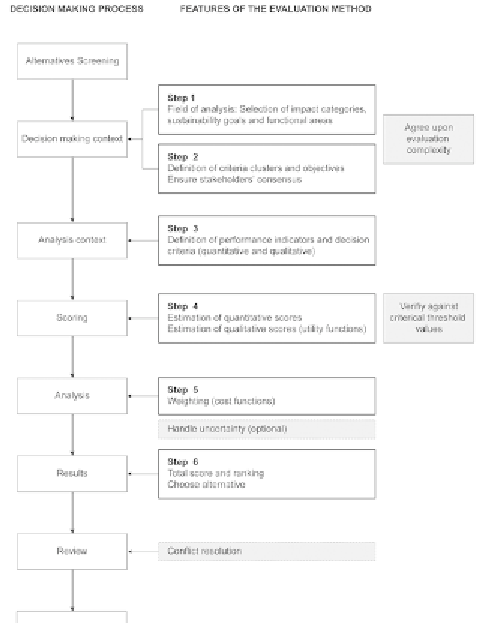Environmental Engineering Reference
In-Depth Information
PROPOSED METHODOLOGY
can also be added to the modular structure. It is
important to note that implementing this method
at such a level of complexity would by no means
be immediate. At the very least, it would require
further investigation into the accuracy of selected
objectives and indicators. The method as presented
here should be readily applicable to a real-world
scenario of limited scope, with end-users applying
the framework in a primarily qualitative manner.
Specific research conducted on the relevance of
each quantitative measurement will enable more
sophisticated implementation in the future.
Focusing on a specific airport development
project for which several planning and design
alternatives are proposed, let
A
= {
A
i
, for i = 1,
2,…,n} be this finite set of decision alternatives.
The method comprises six key steps (Figure 2): (1)
Having developed the theoretical requirements of
the methodology, we can now describe the actual
structure of the evaluation process. Step-by-step
procedures are presented to help end-users evalu-
ate master plan proposals for a generic airport.
This hypothetical example is designed to encom-
pass most major environmental issues that large
airports frequently face. For practical reasons,
a core method is presented using the highest
level of complexity and reliability among those
presented above. For a less detailed evaluation,
end-users should use less sophisticated features
such as a performance matrix, or simply reduce
the amount of quantitative measures. For a more
detailed evaluation, the treatment of uncertainty
Figure 2. Structure of the evaluation method

